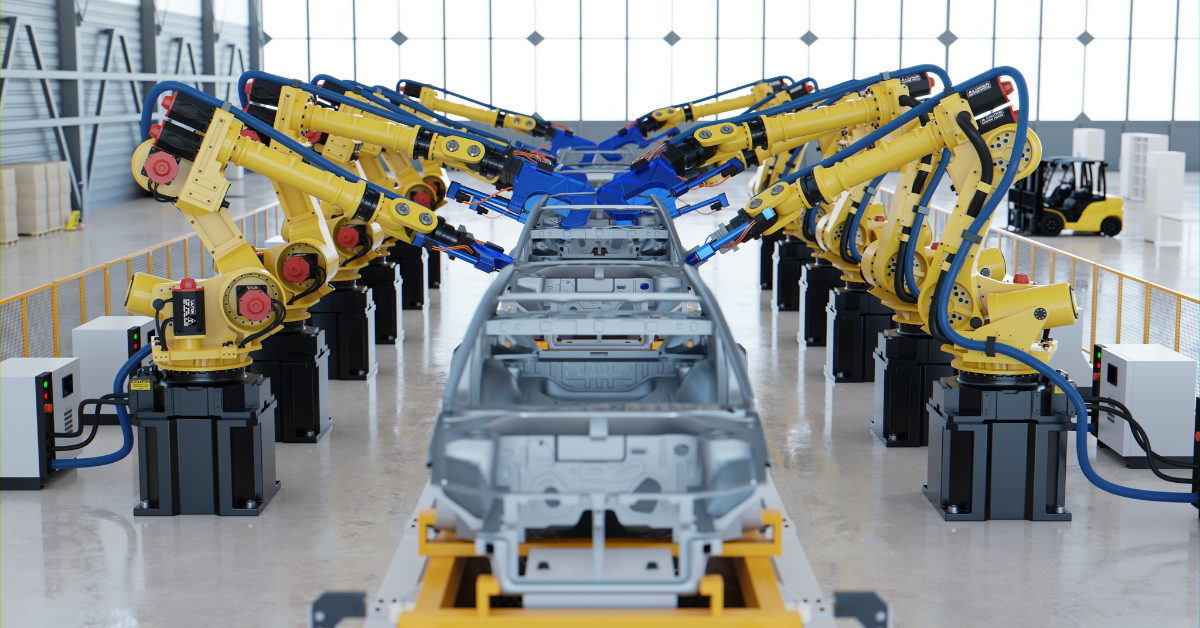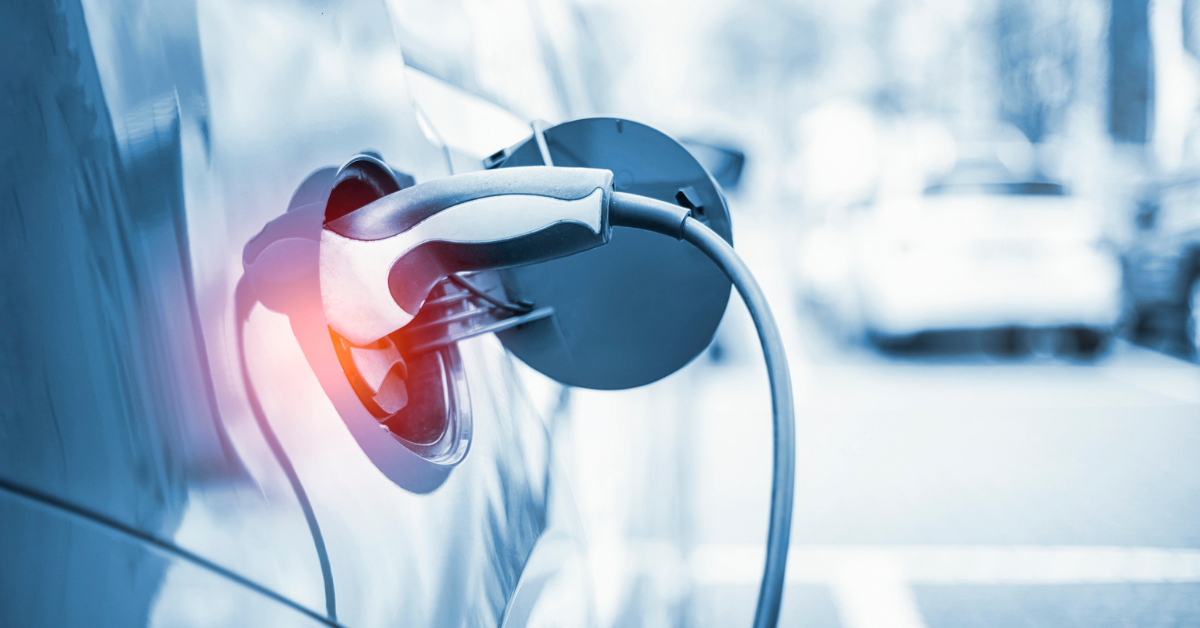
The automotive industry is one of the most exciting fields in engineering. In a world that yearns for more sustainability, time to breathe and eco-friendliness, it’s up to the industry to steer the car industry away from the fossil fuel it is so deeply rooted in. Meanwhile the ever-growing globalization and overcrowding of that same world demands higher mobility, greater safety and an overall superior traveling experience.
Automotive engineers are burdened with the seemingly ungrateful task of keeping the wheels turning and dealing with the almost diametrically opposing demands that face the field. Like any industry, car manufacturing has undergone vast changes since Big Data and AI tools entered the game. However, the practical realization of solutions in the automotive industry often still lies in hardware innovations.
While Big Data and AI tools are of great value for tasks like troubleshooting, process automation, safety and quality testing and driver interaction, the car still has to hit the road, and to do so, the physical machinery remains key. In this article, Lead Consultant and automotive recruitment expert Basma Shamoun takes a look at some of the biggest hardware innovations that keep the industry rolling and make our cars greener, safer and overall better. After she has identified the hot topics in the field, will discuss how you can find the right prospects to get the job done. But first she delves a bit deeper into some of the biggest challenges that the automotive industry faces.
Challenges for the field
Reducing carbon emissions
Many of the biggest headaches for the car industry derive from the climate crisis and the subsequent need to collectively bring down carbon emissions. The transportation industry accounts for roughly 20% of global CO2 emissions, and road vehicles are good for about three quarters of that. Therefore, there is a lot to be gained by reducing the ecological footprint of cars.
However, this is easier said than done. After decades of research, significant progress has been made with battery and fuel cell powered engines, but the techniques are still very much in development as streets are still dominated by fossil fuel cars.
To turn the momentum around for electric vehicles, some important strides still need to be made in the areas of range, battery degradation, and on a number of charging issues. For fuel cell vehicles, the road ahead is a bit more uncertain. To become an economically viable means of transportation - either for consumer vehicles or for the transportation industry - some major developments are still required with regard to hydrogen production, storage and infrastructure - among others.
(Autonomous) safety
Whereas the issue of eco-friendliness is a relatively new one for the car industry, the problem of safety is as old as cars themselves. However, with our streets getting busier and busier and our desire to travel non-diminishing, the topic has never been more current.
Fortunately, safety engineers have not been idle, and in recent years the field has seen some game-changing developments, ranging from drowsiness detection systems to adaptive headlights that pivot with the direction you take. However, these innovations also came with a new set of hardware challenges that need to be dealt with as we transfer more and more responsibility to the car's autonomous systems.
Reliability and Durability
As cars are becoming more complex and more reliant on advanced automated and electronic systems, the risk of bugs and malfunctions increases. Meanwhile the stakes are raised as these automated systems make increasingly important decisions for us. For a large part, this is a software affair, however, for the software to be able to deliver, peak material performance is an absolute necessity.
Furthermore, with the car industry gradually shifting its focus towards electric driving, battery degradation and end-of-life recyclability have become major topics. After all, the last thing we want is replacing an emissions problem with a waste problem. In addition, many consumers might be open to the idea of sustainable driving, but are they also willing to do so at the cost of the longevity and loyalty of their old vehicles?
Sustainability and Environmental Impact
Regardless of the durability issues discussed above, every car will at one point have run its final kilometer - no matter its performance. Therefore, the automotive industry also fights an ongoing battle with waste. However with the increased focus on circularity and environmental impact it is more important than ever for the automotive industry to invest in sustainable materials and future-proof end-of-life solutions.
However, the environmental impact of a car starts long before the scrapyard. Where a car comes from is just as important as where it ends up. Therefore a sustainable auto industry should take into account the entire life cycle of a car, from the design and manufacturing process to the car's final breath and after life. This means that using the right eco-friendly materials and sustainable methods are a top-priority for every forward-looking company in the field.

Hardware innovations in the automotive industry
Electric vehicles
Range
Some of the main concerns stopping people from buying an EV relate to the range of the battery and the accessibility of chargers. While modern EVs are perfectly suitable for city life and most daily commutes, things get a bit more tricky when distances get stretched and the terrain becomes less familiar.
With an average range of about 350 kilometers (216 miles), most EVs still cannot match the long range benefits of fossil fueled cars. However, EVs have come a long way in recent years, allowing for greater driving range, and thus, less uncertainty on the road. A number of battery improvements have allowed energy to be stored more efficiently, while some performance innovations in turn allow stored energy to be converted into motion more efficiently.
In the past decade, lithium-ion batteries remained the dominant technology for EVs. However, ongoing developments have significantly increased the energy density of new batteries, allowing them to store more energy in the same or less space. Thus resulting in longer driving ranges. Meanwhile, the new, promising storing technology of solid-state batteries looms on the horizon, with the potential to take over the EV market with even higher energy density, faster charging and lighter and smaller materials.
Additionally, performance-based improvements in the areas of thermal management and engine efficiency, and new feats like regenerative braking, have further increased the range of electric cars.
Modern EVs are equipped with advanced active cooling systems that use liquid coolants and heating elements to regulate the temperature of the battery pack. These systems allow the car to actively and precisely manage the temperature when, how and where in the pack it’s needed; whether it’s cooling down during fast charging or intense usage, or heating up in cold weather to maintain ideal operating conditions.
In the engine, improved converters reduce energy losses during conversion, whereas increasingly efficient motor design and usage of more advanced materials further reduce electrical resistance and up the performance of the car. Furthermore, the development of regenerative braking ensures that even the kinetic energy generated when slowing the car down and braking isn’t lost, but instead is captured, and converted back to electrical energy again.
Charging
That leaves the matter of charging. Nobody likes the idea of joining the back of a queue on their way to a holiday destination as each EV in front needs extensive charging time. Let alone the horror prospect of getting stranded at the side of the road on said holiday location, only to realize that there is no charging station in sight. But how realistic is our range anxiety?
In recent years the rollout of EV charging stations has definitely caught on speed. As of 2022, there were 535,000 charging stations in Europe - more than two times as much as in 2020. With the EU recently adopting a law that requires members to have chargers at every 60 kilometers of motorway by 2030, this pace is only looking to go up in the years to come.
Meanwhile fast charging technology has also taken flight, drastically improving the practicality of EVs. High power chargers have become both faster and more widely available, reducing charging times to under 1 hour. Still longer than filling up at the pump, but while a two hour charging stop feels like a nuisance and a waste of time, a 20 to 30 minutes of charging break could easily go for a well deserved coffee break and sanitary stop.

Fuel Cell Vehicles
Compared to EVs, fuel cell vehicles are still a bit further from breaking the mainstream. Even though major car manufacturers like Hyundai and Toyota have put their first commercial hydrogen cars on the market, the potential of FCVs mainly seems to lie in the long-distance and heavy transport of the logistics sector. But even in that field, there are still some major obstacles to be dealt with in terms of hydrogen production and storage, infrastructure and cost.
Hydrogen can be produced through a variety of methods, but all of those have in common that they require a lot of energy. As of 2023, the most used method still relies on fossil fuels, and thus emits greenhouse gasses. However, greener alternatives, using wind or solar power, or biomass like waste or algae, are gaining traction. Thus making FCVs more environmentally friendly.
Meanwhile, innovations in hydrogen tank design and materials have reduced weight and increased storage capacity through high-pressure hydrogen storage. Innovations in fuel cell technology have furthermore ensured that hydrogen can be converted into electric energy more efficiently, while also reducing cost by limiting the amount of platinum required.
That leaves some practical issues relating to cost and accessibility of hydrogen filling stations. As of the start of 2023, there were 254 refueling facilities in Europe, 89 in the US and over 450 in Asia. In other words, we’re still very far from universal coverage. However investment in both hydrogen technology and infrastructure is ramping, thus slowly creating a network of interconnected logistical hubs. Meanwhile the wider adoption of the technology and entry of some major players into the field has significantly increased R&D investment and reduced FCV costs.
With zero tailpipe emissions and greater range and energy efficiency than electric vehicles, FCVs definitely show promise for the future, especially for heavy long range vehicles like buses and trucks. With the technology becoming more familiar, charging stations more accessible and hydrogen production greener, FCVs definitely have the potential to take it to the next level in the coming decade.
Autonomous Safety
Modern cars are equipped with a wide range of smart safety features that assist the driver while on the road. These range from fairly established and relatively ‘simple’ tools like parking sensors and cruise control, to complex, next-generation systems like vehicle-to-everything communication technology.
What all these systems have in common is that they are all meant to make our driving experience both more comfortable and safer. To do so, they typically use a variety of sensors, including radar, light detection and cameras, to make assessments of the environment and make decisions based on the input they collect.
In recent years, safety features are rapidly becoming more complex, as cars are becoming increasingly autonomous. While fully self-driving vehicles are still not quite there yet for the general public, tools like lane-keeping assist, adaptive cruise control and automatic emergency braking have become well-established in modern cars.
These advanced driver-assistance systems use a number of detection tools to monitor the road and the movement of other vehicles. When necessary these systems can intervene without human interaction, by for instance adjusting speed, braking or steering to keep the car in lane.
More complex detection tools include HD Mapping technology and drowsiness sensors. The first one uses complex environmental characteristics like road signs and landmarks to guide navigation and decision making, for instance to foreshadow bad road conditions. The latter turns the camera inward, to detect patterns of fatigue in the driver, and sound an alarm if the system suspects that the driver is losing focus or falling asleep.
Another promising development in autonomous safety is vehicle-to-everything communication. This technology allows cars to exchange information with other cars, pedestrians and infrastructure about their current position and possible hazards. This communication can prevent accidents as it can warn cars in real-time for upcoming dangers, thus allowing the car to anticipate the situation ahead.
Reliability, Durability, Sustainability
As mentioned previously, the main tools for car builders to improve the reliability of car systems lie in software solutions. For example, automation in the production process limits the possibility of human error, while advanced diagnostics software can make predictions about where maintenance will be required, thus allowing drivers to proactively deal with potential problems before they arrive.
However, to also eliminate potential problems as much as possible, manufacturers are using high-end advanced materials like corrosion-resistant composites and 3D printed components. These innovations in material science have reduced weight and extended the life of certain vehicle systems.
Additionally, these methods have also reduced waste as parts last longer and are made with more precision. Other sustainable developments in the automotive industry include the use of recycled or eco-friendly materials in car interiors. This includes closed-loop recycling, where materials like plastics from end-of-life vehicles are given a second life in new cars.
That leaves us with the issues of battery degradation and end-of-life waste management. As mentioned before, the first issue can be addressed as best as possible through improved, more targeted battery management, including thermal control and smart-charging. The second one remains a bit more difficult.
However, some great steps have been made in battery repurposing and recycling. When a car battery doesn’t meet the required standards for vehicles anymore, it can get a second life as a stationary storage system, for instance at home. When the capacity further deteriorates and that is not an option anymore, the valuable materials like cobalt, stainless steel and aluminum are separated out to be repurposed, whereas other parts go to waste.
As of now, only about 50% of materials is being recovered from lithium-ion batteries, but some major manufacturers are rolling out ambitious programs to bring these figures to almost zero waste.

Finding the right prospects to keep your business moving forward
As our cars are becoming more complex, jobs in the automotive industry are becoming more specialized as well. While any mechanic can tinker away on a combustion engine; to work on EVs, many hours of additional training and formal certification are required. Broadly speaking, the same goes for engineering jobs. Overall knowledge of the functioning of a car is still a must, but without a specialization in an area like battery technology, mechanical design or hydrogen storage, it might be difficult to get a foothold in the auto industry on the engineering level.
Besides the major engine changes that are at the core of the automotive industry, the digitization of cars has also revolutionized all peripheral aspects of the driving experience. Therefore, car engineers of tomorrow do not only need expertise in an area of automotive engineering, but they also need to be comfortable working with computer science, data analytics and complex autonomous driving systems.
For over a hundred years, the fundamental technology of the automotive industry has remained largely unchanged, but now the field faces a radical uprooting of those foundations. The first steps in a new direction have already been made in the previous decades, but where the road will lead next, and who will be the industry's guiding lights still remains largely uncertain.
Move your company forward with Amoria Bond
To be a part of this auto-industry 2.0, it’s extremely important to get the right candidates in the right positions. Meanwhile, the increased specialization in the field and new areas of focus make it more difficult to keep a clear oversight of what is out there, and what your company needs. With our expertise and experience in the automotive industry, Amoria Bond is your go-to recruiting partner for finding the brightest engineers of today and tomorrow.
Whether your company is in EVs or FCVs - automation or sustainability, Amoria Bond is your partner to keep your company moving forward and Progress Lives Everywhere. Contact my team and I today to learn how we can help you.





